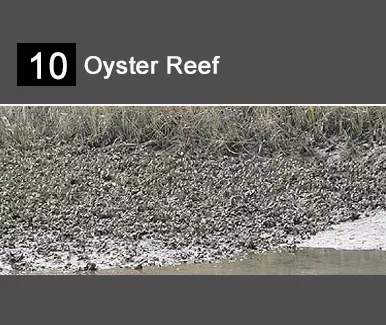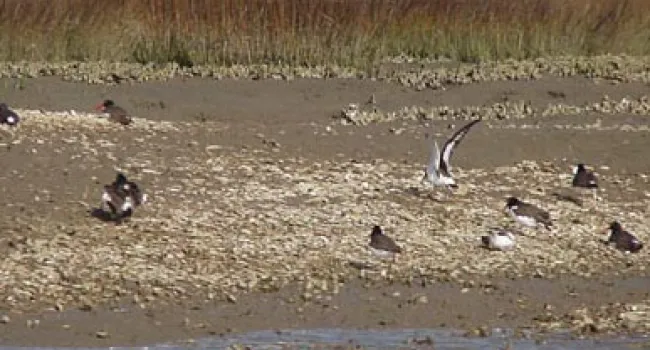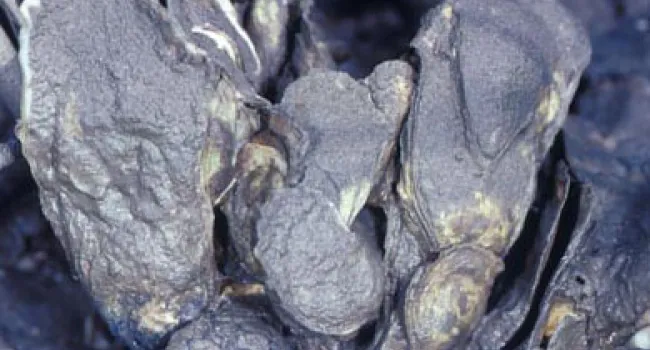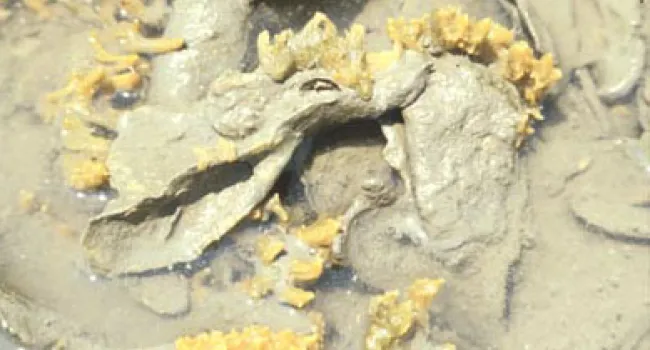
Photo
Several different annelids are associated with the oyster reef, but the spaghetti worm is one of the largest and most spectacular. The spaghetti worm lives in a burrow of mud that it builds among the...
One of the few hard places in the salt marsh is the shell of another animal. Most of the salt marsh is full of soft mud, but where oysters have gained a foothold, animals that like to live on a firm place are able to grow. Oysters like each other, and once an oyster reef starts to grow, it can continue to get larger as more oysters join it. But how can an oyster get to an oyster reef? The adults cannot move, but the larvae can. The oyster larva drifts in the plankton, but when it smells the other oysters in an oyster reef, it settles out of the plankton and becomes an adult. Many other animals live hidden among the shells of an oyster reef. Different kinds of sponges can grow there, annelids live among the shells, and even some fish lay their eggs inside dead oyster shells. A bird, the oystercatcher, specializes on eating oysters and these other animals.

Photo
Several different annelids are associated with the oyster reef, but the spaghetti worm is one of the largest and most spectacular. The spaghetti worm lives in a burrow of mud that it builds among the...
Photo
Boldly patterned in black and white, the stocky American oystercatcher is hard to mistake. It has long red legs and a large red bill. As the name suggests, they feed mainly on oysters, although they...
Photo
The Eastern oyster occurs along the entire East Coast, from Canada to the West Indies. It varies somewhat in habitat along this area. Oysters build reefs because the young oysters, called spat, are...
Photo
The sun sponge is named for its unusual lifestyle. It is one of the very few sponges that can tolerate exposure to the sun and air. Nearly every other sponge will die when air gets into its body. Most...